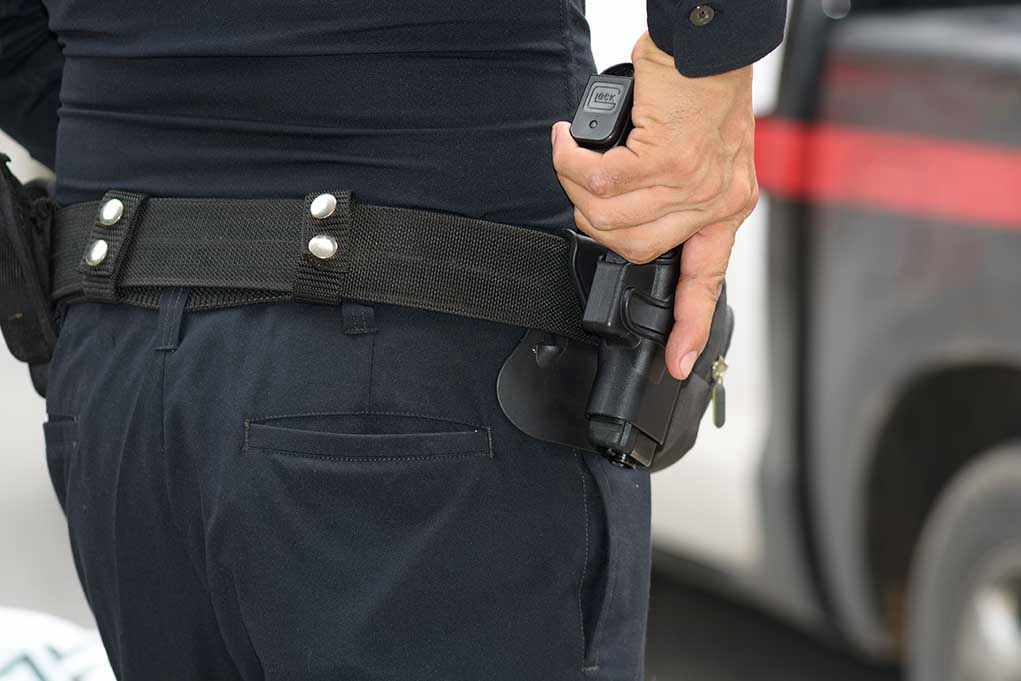
No one expects to be mistaken for a threat while pumping gas—until a police officer draws a gun, turning a mundane moment into a flashpoint for national debate about perception, bias, and public safety.
Story Snapshot
- Deputy drew a firearm on a man at a Tallahassee gas station after mistaking a pump nozzle for a pistol.
- Incident, caught on video, reignited questions about police training, perception, and implicit bias.
- No injuries or arrests occurred, but the episode has fueled scrutiny of law enforcement protocols.
- Broader pattern of similar misidentifications prompts renewed calls for reform and accountability.
Gas Station Routine Turns Into Armed Stand-off
Circle K, Tallahassee, broad daylight. A man, heavily tattooed, fills his tank, unaware he’s moments from the center of a viral controversy. Lee County deputies pull in. An officer, perceiving the gas nozzle in the man’s hand as a pistol, draws his weapon. Commands echo: “Show your hands!” Bystanders freeze. The man complies, confusion etched on his face. Within seconds, the officer recognizes the mistake—the object is a gas pump nozzle, not a firearm. The tension collapses, but the world is now watching.
Video of the exchange circulates like wildfire, igniting fierce debate. The officer detains, then releases the man with no charges or further incident. Yet, the images linger—another public encounter transformed into a cautionary tale. For the man, this was a routine errand; for the officer, a perceived split-second threat. The gap between perception and reality becomes the spark for a much larger conversation.
The Anatomy of a Policing Error: Perception, Bias, and Protocol
Law enforcement experts point to stress, implicit bias, and rapid decision-making as culprits in these misidentifications. The officer cited the way the nozzle was held and the man’s appearance—specifically, his tattoos—as contributing to the perceived threat. Such factors, though often subconscious, shape how officers interpret ambiguous situations. American policing history is riddled with fatal consequences from similar errors: toy guns mistaken for real ones, cell phones for weapons, wallets for pistols. Each case amplifies calls for better training in threat assessment and de-escalation, especially in routine settings.
Incidents like this are not isolated. The names Tamir Rice and Stephon Clark are invoked—both victims of misplaced suspicion and objects mistaken for weapons. The stakes in these seconds-long assessments are life and death, trust and suspicion, safety and tragedy. Advocates argue that reforms must address not just protocols, but also the deeper cognitive biases that shape split-second decisions. Critics counter that officers must prioritize their own safety, given the unpredictability of encounters. The balance between prudence and overreaction remains fiercely contested.
Public Outcry, Media Scrutiny, and the Push for Reform
The Tallahassee incident has escalated from a local misunderstanding to a national talking point. Media outlets dissect frame-by-frame footage, while social media amplifies outrage and analysis. Calls for police department statements mount, yet as of publication, the Lee County Sheriff’s Office has remained silent on disciplinary action or procedural review. Community leaders and civil rights advocates demand transparency and accountability, wary of the chilling effect such encounters have on public trust.
Officer draws gun on man at gas station after mistaking pump for pistol https://t.co/TyzOzhejyg pic.twitter.com/NILfxb6Ekr
— The Independent (@Independent) October 8, 2025
The impact stretches beyond one gas station. Residents fear that everyday actions—buying snacks, pumping gas, checking a phone—could be misread with catastrophic consequences. Law enforcement agencies nationwide feel the ripple: training regimens scrutinized, body camera policies debated, and the specter of civil lawsuits looming. For many, this incident isn’t just about a single mistake, but a symptom of a systemic challenge facing modern American policing.
Lessons, Consequences, and the Road Ahead
The man at the center of the Tallahassee incident emerged unharmed, but the social fabric was frayed. Short-term, the episode heightened anxieties about police encounters in public spaces. Long-term, it has reinvigorated calls for comprehensive reform—mandatory body cameras, implicit bias workshops, and protocols emphasizing de-escalation over confrontation. The social and political fallout continues to play out in city halls, advocacy forums, and family conversations across the country.
Law enforcement faces a crossroads: adapt to public demands for accountability or risk further erosion of trust. Every misidentification, every viral video, adds urgency to the debate. Effective policing requires clarity, calm, and discernment—even when adrenaline runs high. The question remains: will this incident spark meaningful change, or will it become just another entry in a growing ledger of cautionary tales?
Sources:
Officer draws gun on man at gas station after mistaking pump for pistol













